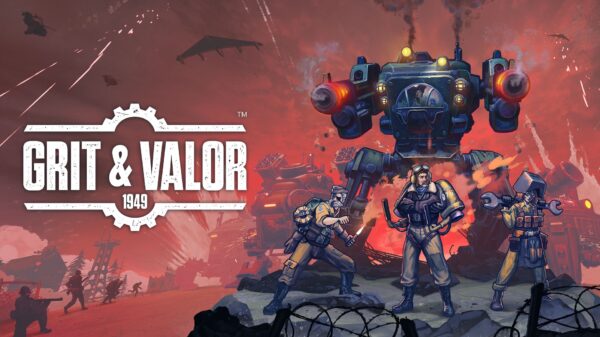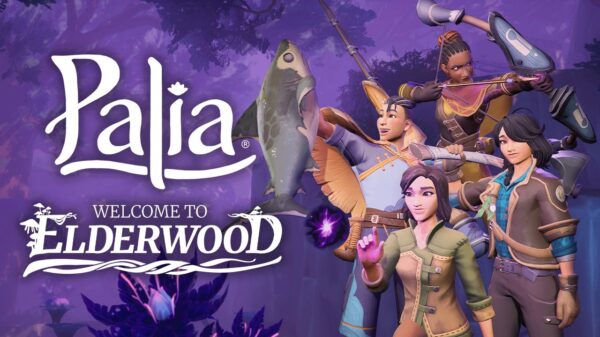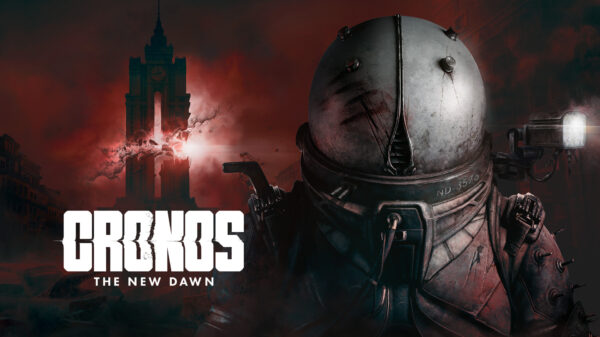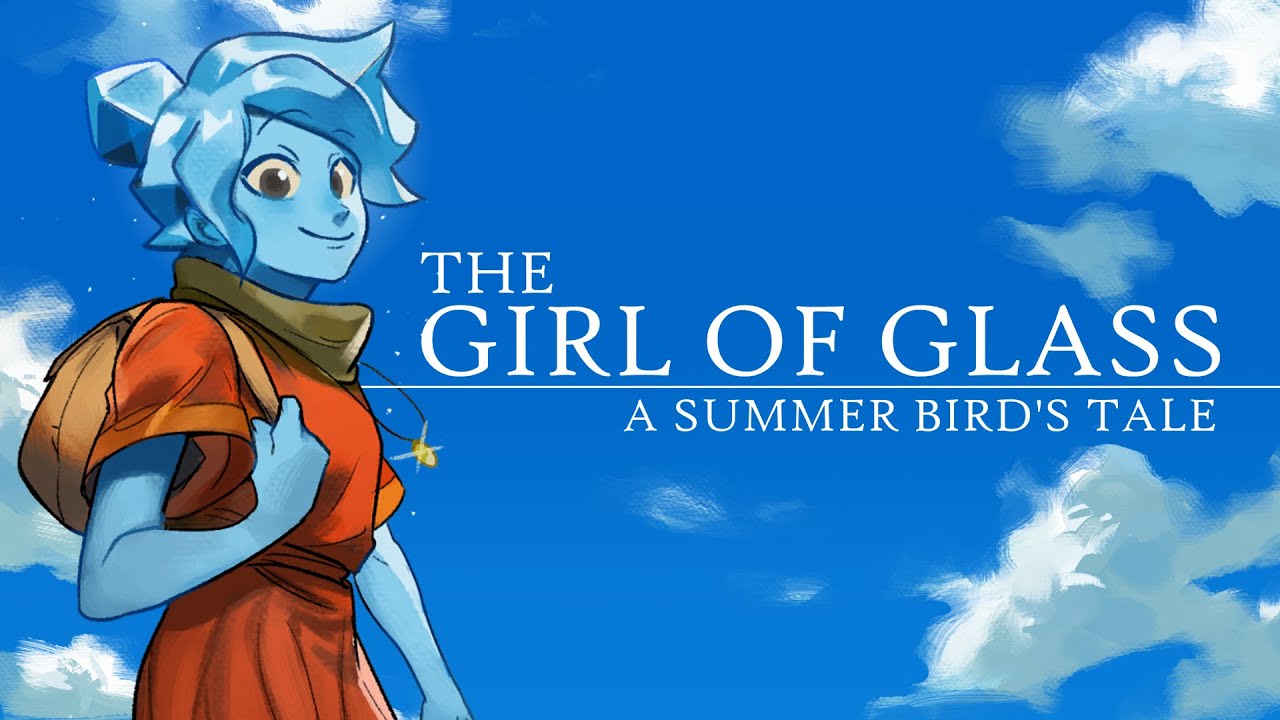Follow Kristal, the girl of glass, on a strange and surprising journey that alternates between point-and-click adventure sections and challenging turn-based battles, with a story that is never quite what it seems.
The Girl of Glass: A Summer Bird’s Tale
Developer: Markus with friends
Price: $18
Platforms: PC
MonsterVine was provided with a PC code for review.
The Girl of Glass: A Summer Bird’s Tale begins on a train, where Kristal–the girl of glass–is looking through photos of key characters from the game. She talks a little about each character, but soon realizes she hasn’t gotten away–the eagle has found her. The game then jumps back into the past, where Kristal works at a struggling circus and longs to get away. A boy then arrives at the circus and asks Kristal to leave with him, and so it appears she’s found her chance at last.
When I previewed The Girl of Glass earlier this year, the demo ended on an intriguing note as the story took a surprising turn. However, immediately after that point in the full game, Kristal wakes up and learns that the more fantastic direction the game had veered into was just a dream. She then resumes more mundane activities as she prepares to leave with the boy. At this point, I felt a little as though the game had tricked me, and this wouldn’t be the first time. The game’s opening hours are not very indicative of what is to come.

The gameplay is split into two main segments: point-and-click adventure game puzzles and strategic turn-based battles. The adventure game segments are fairly standard; you talk to characters, find items, and use those items to solve puzzles in order to proceed. However, beyond the opening section, they end up being a comparatively small part of the game. The other half of the gameplay lies in its turn-based battles, which grow more complex as the game goes on. You have special abilities with a variety of effects, an energy meter that makes you vulnerable to critical hits if it runs out, and a positioning system with either two or four spots to move between, depending on the battle. The addition of allies, elemental weaknesses, and bosses with unique attacks makes each battle a strategic challenge as you balance all of the game’s mechanics to strike the enemy’s weaknesses while protecting your own.
After a certain point in the game, you’re asked to pick a difficulty setting for combat. On the higher levels, it is quite challenging indeed and gives you the option to permanently lower the difficulty if you lose a battle too many times. At launch, even the easier settings were difficult due to only changing how much health you could lose before getting a game over, but post-launch patches adjusted the difficulty and made the easier settings significantly milder. Battles make up a good portion of the gameplay, and most are directly tied to the story. Many turns have dialogue in between them, to the point where it sometimes feels like combat is more a vehicle for the story than anything else, despite its difficulty.
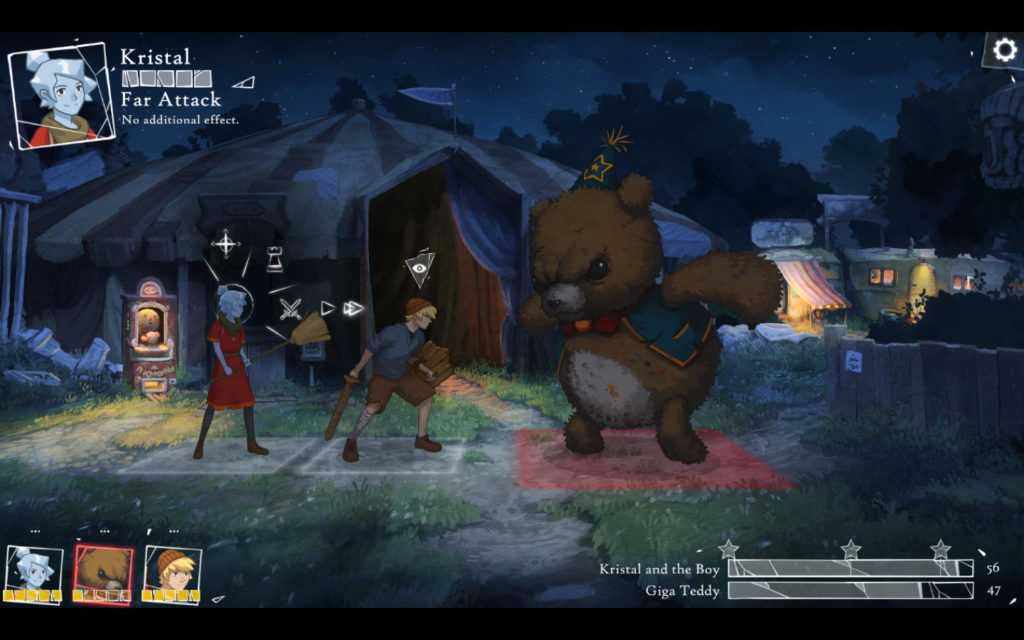
The story is clearly the main feature of The Girl of Glass, and it is aided by beautiful art and narration. However, just like the gameplay, it takes a dramatic shift. The early hours are somewhat whimsical and humorous, but once Kristal actually leaves the circus, the tone becomes much grimmer, even bleak at times. Far from the fairytale it first seems like it might be, it’s a political struggle against fascism and oppression that alternates between combat sections in the present and adventure game sections in the past. The change in tone is probably intentional, to mirror Kristal’s own changing feelings as she loses her romantic view of the world and is faced with a darker reality, but the result is that the game’s beginning sets you up for something very different than the rest.
It’s also a strange mix of contradictions. A game that tries to explore how nuanced and complex people truly are gives its main antagonists dialogue that is so by-the-books that they almost feel like caricatures. A story that can be truly emotional at times skips past moments that should be impactful as though they don’t matter. The Girl of Glass has a strong, personal message to convey, but the meaning is sometimes lost in the shuffle when other parts of the story just end up feeling off.
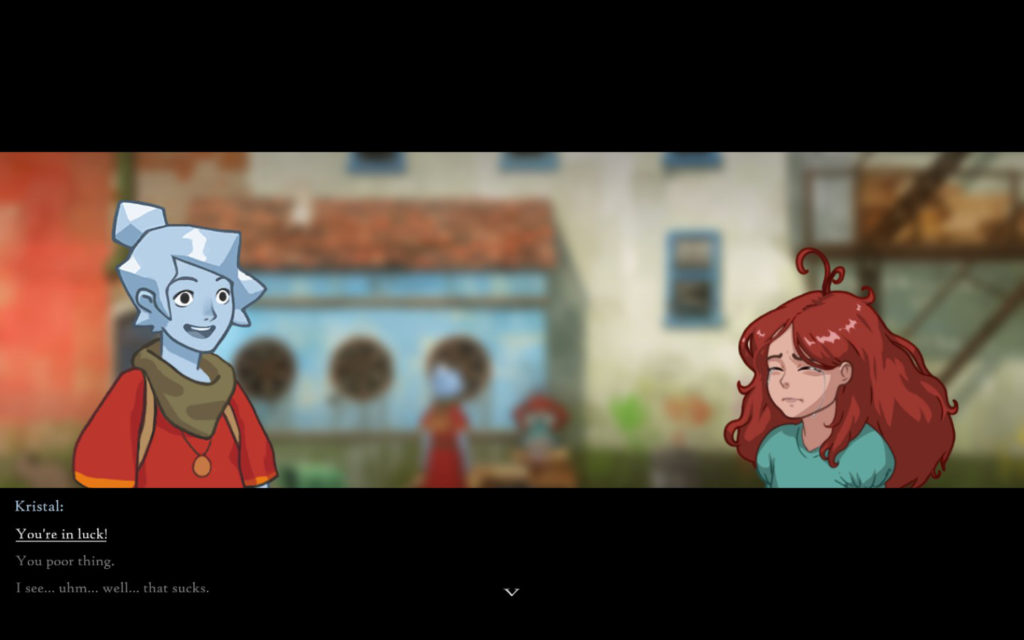
On the other hand, it’s certainly not predictable–although strangely, the most predictable parts are dragged out the longest before the reveal. There are many twists and turns along the way, some good and some bad, and I never quite knew what to expect from the story. Dialogue options at certain key points can also lead to different outcomes, which adds replay value to what is otherwise a fairly linear game.
 The Final Word
The Final Word
I finished The Girl of Glass with mixed feelings. Its high points are wonderful, but its low points are frustrating, and through it all, I couldn’t shake the sense that the opening hours lied to me. While it’s a tough sell based on any of its individual pieces alone, you might check it out if the story intrigues you–as long as you remember it isn’t what it first seems to be.
-MonsterVine Rating: 3 out of 5 – Average



